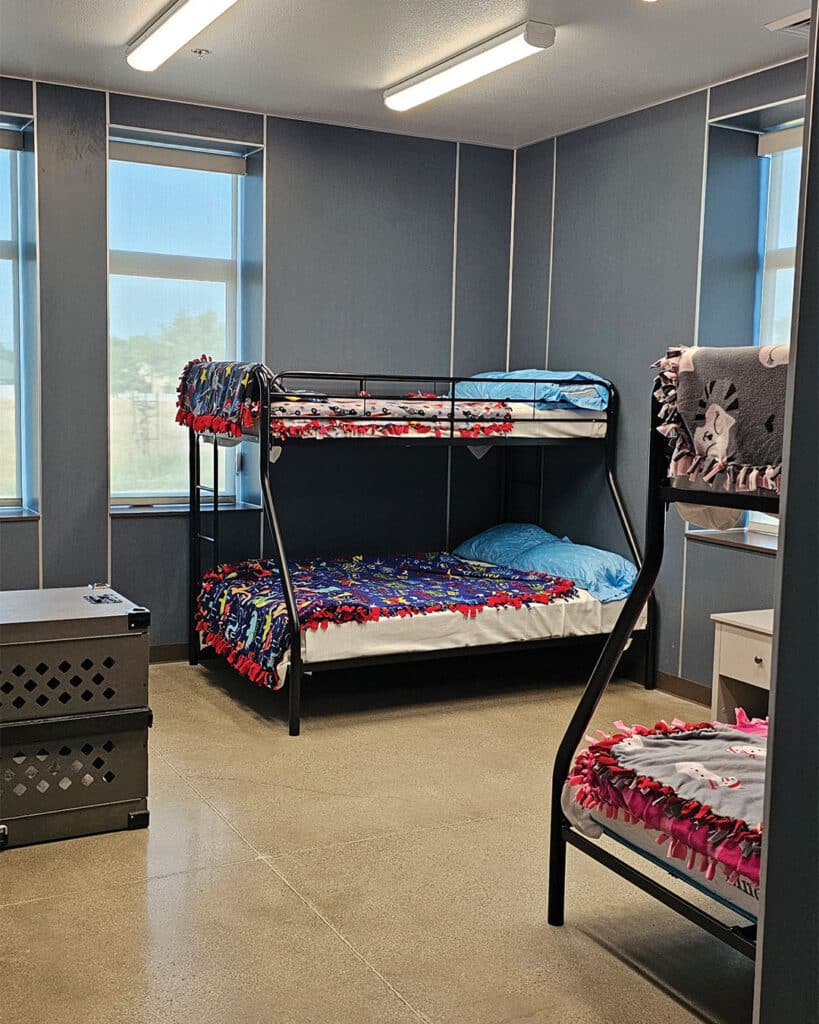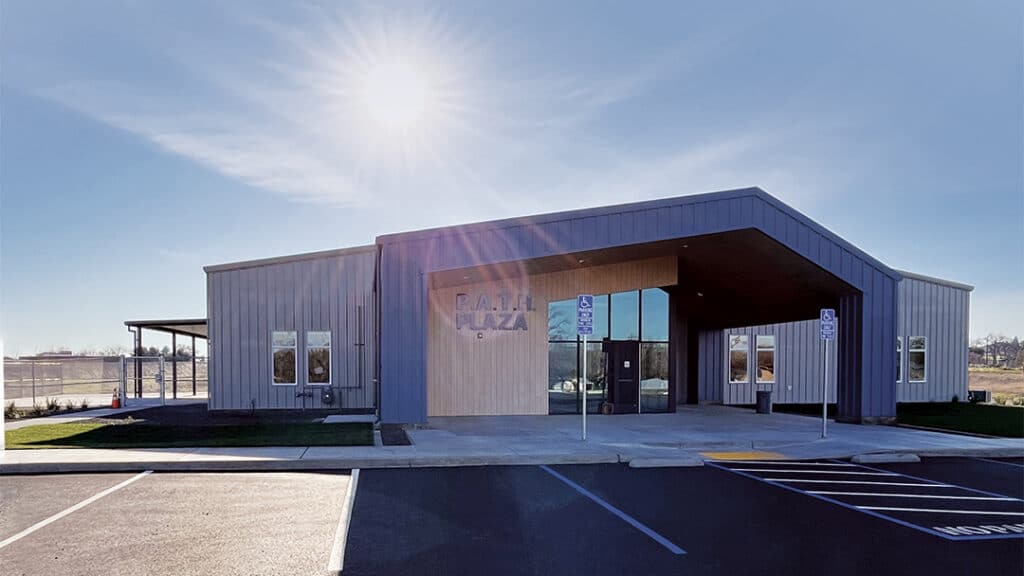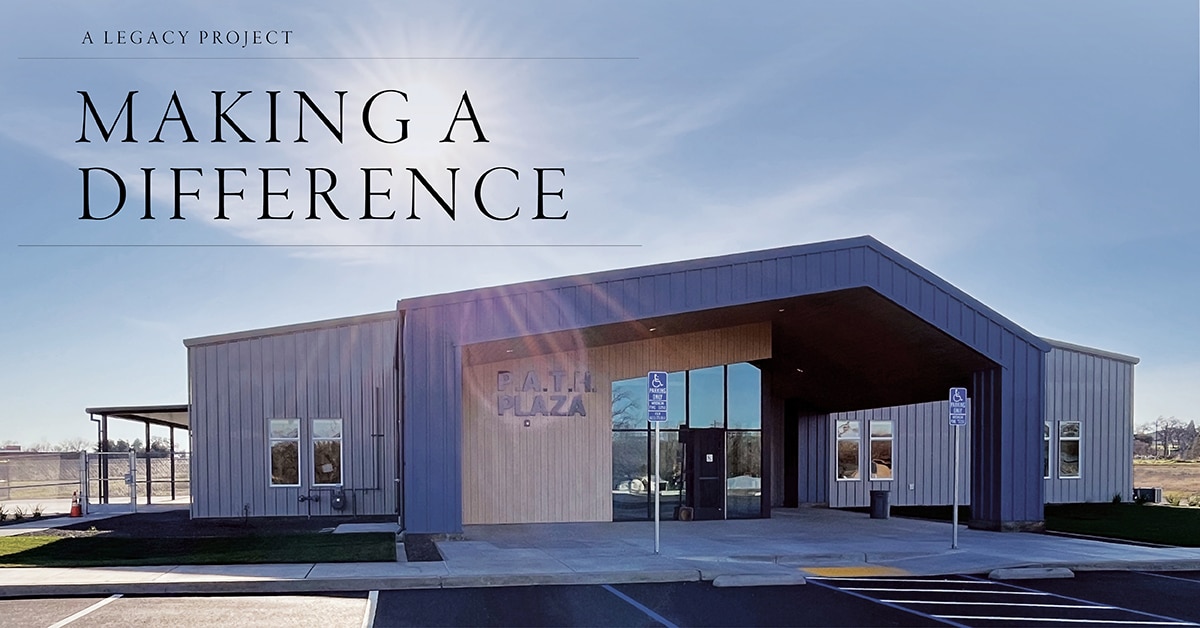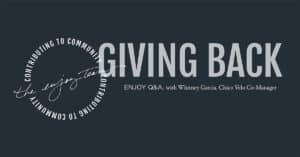Making a Difference
PATH Navigation Center in Red Bluff…
When care and compassion meet hard work and dogged determination, great things can happen. The May first opening of the PATH Navigation Center in Red Bluff proved just that. It is the culmination of 25 years of grassroots effort to address the community’s concern for the unhoused.
In 1999, Allene Dering heard a faith call to support those living on the streets. Her coalition has grown over the years, just as the needs of the unhoused have. “We try to serve the most vulnerable first,” says Jimmy Rolson, director of operations. “We’re a low-barrier shelter. Come as you are. There’s a lot of compassion here.” By the end of May, the shelter was serving 120 people a day, with numbers expected to rise.
Christina Agnew is the navigation center manager and brings seven years with the nonprofit to this new venture. Her motivation is personal, having experienced firsthand the dangers and pain of homelessness. “My brother was homeless about four years ago and he died being homeless in Butte County,” she says. “After that, I wanted to help as many people as I can.” She estimates that about 80 percent of homeless people don’t have a support system, especially those with addiction issues, who may have burned the bridges of connection to friends and family.

What many unhoused people do have, however, is pets. The PATH Navigation Center welcomes animal companions of its guests and makes sure all are well-cared for. A partnership with Buster’s Paw Prints provides food, a dog run, vaccine clinic and veterinary care at the center. While most pets are dogs or cats, various birds including a pet duck have found shelter with their owners.
The PATH Navigation Center engages multiple partnerships in support of its guests to help them transition out of emergency care into a more stable situation. Each guest receives wrap around case management services that opens access to a mobile medical unit that comes by twice a month and includes mental health and drug/alcohol services.
“We know that people are going to have health issues,” says Rolson. “Our goal is to make sure no one is dying on the streets alone.”
The key to success is rapport and relationship building. All employees are empowered to engage and support guests, to learn their stories and advocate on their behalf. The results never come easy, but are always worth it.
Agnew relates the story of a woman who arrived with rage and was never allowed to stay long when she first arrived. “She was really angry and would get kicked out all the time for yelling obscenities. We just kept working with her, staying calm. She has made a complete 180-degree difference. She’s housed at the shelter now and is even talking about getting a part time job.”

“We also have an outreach crew,” says Rolson. “Four gentlemen go out to camps and offer services and bring water and snacks. We give them trash bags and encourage them to keep their camps clean. We come by every Tuesday and pick up the bags. It’s like having a trash service.”
PATH, which stands for Poor And The Homeless, uses a federally recognized screening instrument to determine who is most in need of rapid rehousing services. Quite bluntly, it measures who is most likely to die on the street. “I pull the most vulnerable from under the bridge or by the river,” says Rolson.
Rolson notes that he sees issues of addiction, mental health and economics as the most common causes of homelessness. He also notes that 95 percent of PATH clients are local. “Their last address was in Tehama County,” he says. “These are people we grew up with.”
While PATH is a low-barrier system of care, it is not without rules. “We’re trying to be good neighbors,” says Rolson. “We have good neighbor policies in place. We have transportation for people so they aren’t wandering through neighborhoods to get places.”
In addition to the new Navigation Center, PATH operates three homes for those transitioning out of homelessness. Two are for men and one is for women and children or single women. “These are for people starting to get more on their feet. They have jobs,” says Rolson.
“We really want the public to know that we’re making a difference,” he adds. “We’re not just letting people hang out. We want everyone to know about the care and compassion that goes on here. It’s human life and they are human beings that deserve to be treated as such.”
As for the new Navigation Center, “All the dreams are coming true for the visions that the original founders had,” he adds. “This is a legacy project for the county.” •
PATH Navigation Center • www.pathplaza.org




